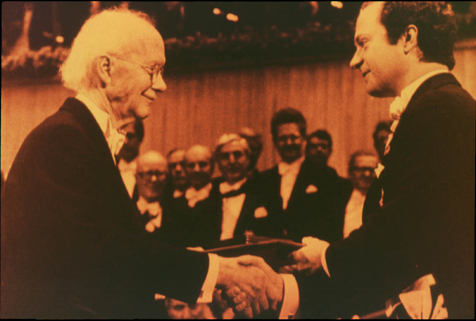
Faculty Research 1980 - 1989
Analysis of cloned T cell function. II. Differential blockade of various cloned T cell functions by cyclosporine.
Document Type
Article
Publication Date
1983
Keywords
Clone-Cells: im, Cyclosporins, Female, Helper-Cells: de, Immune-Tolerance: de, Interleukin-2: ph, Lymphocyte-Transformation: de, Male, Mice, Mice-Inbred-Strains, SUPPORT-NON-U-S-GOVT, SUPPORT-U-S-GOVT-P-H-S, T-Lymphocytes: de, T-Lymphocytes-Cytotoxic: de
First Page
706
Last Page
711
JAX Source
Transplantation. 1983 Dec; 36(6):706-11.
Grant
R23AI19254, AI/GM17687, AI18326, +
Abstract
Cyclosporine has profound suppressive effects on selected in vitro functions of cloned T lymphocytes. Cyclosporine inhibits the antigen-induced proliferation of the helper T cell clone 12-11. The effective dose required to reduce this response by 50% (ED50) is 28 ng/ml. In contrast, the proliferation of clone 12-11 induced by exogenous growth factors in secondary mixed lymphocyte culture supernatant (2 degrees MLC SN), is relatively insensitive to cyclosporine (ED50 = 4600 ng/ml). Furthermore, cyclosporine abrogates both antigen-induced and mitogen-induced secretion of lymphokines by clone 12-11, indicating that cloned helper T cell function is sensitive to cyclosporine even when interactions between specific alloantigens and their cell surface receptors are bypassed with mitogen. The suppressive effect of cyclosporine is not limited to helper T cell clones. The cytolytic T lymphocyte (CTL) clone 5MD2-2 is also sensitive to cyclosporine. Again, cyclosporine (100 ng/ml) blocks the antigen-driven, but not the exogenous lymphokine-driven, component of clone 5MD2-2 proliferation. This suppression does not result from the occlusion of antigen receptors or from antigen deformation by cyclosporine, because clone 5MD2-2 remains capable of antigen-specific cytolysis in the presence of cyclosporine concentrations that can suppress its proliferation. Finally, the ability of clone 5MD2-2 to remove IL-2 activity from culture media, a function that is significantly enhanced by contact with specific alloantigen, is not influenced by suppressive cyclosporine concentrations.
Recommended Citation
Orosz CG,
Roopenian DC,
Widmer MB,
Bach FH.
Analysis of cloned T cell function. II. Differential blockade of various cloned T cell functions by cyclosporine. Transplantation. 1983 Dec; 36(6):706-11.

